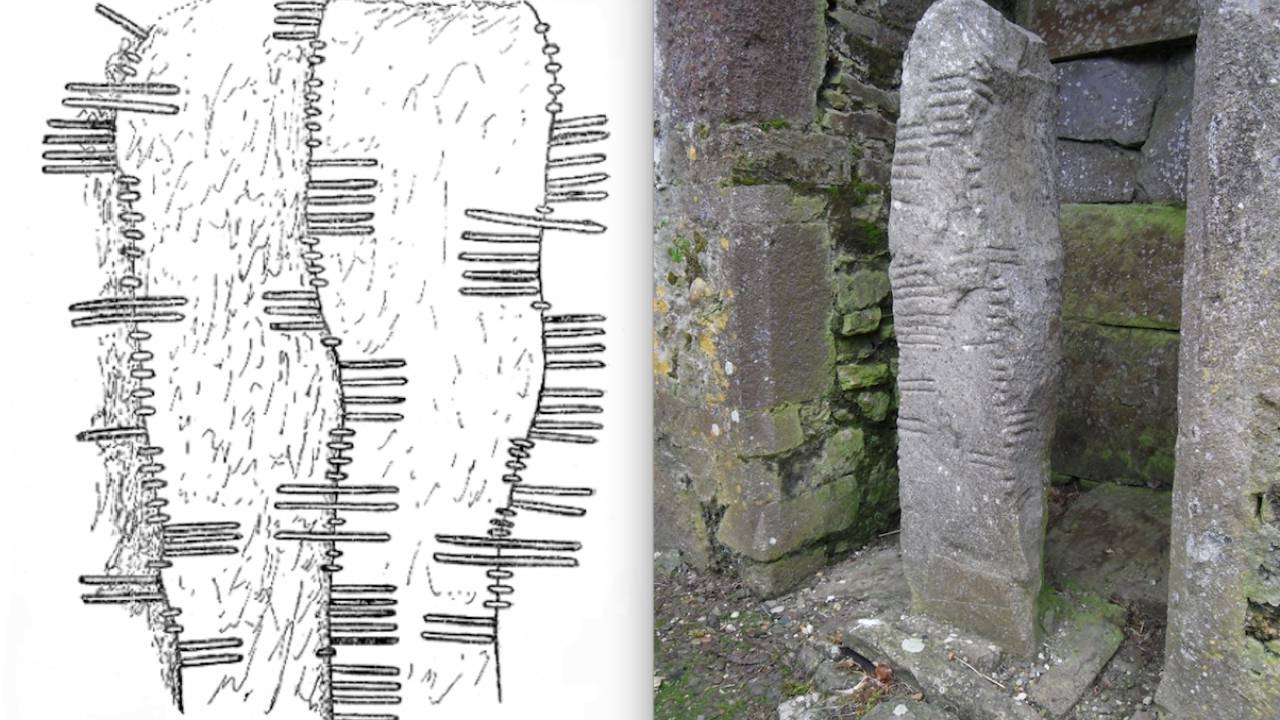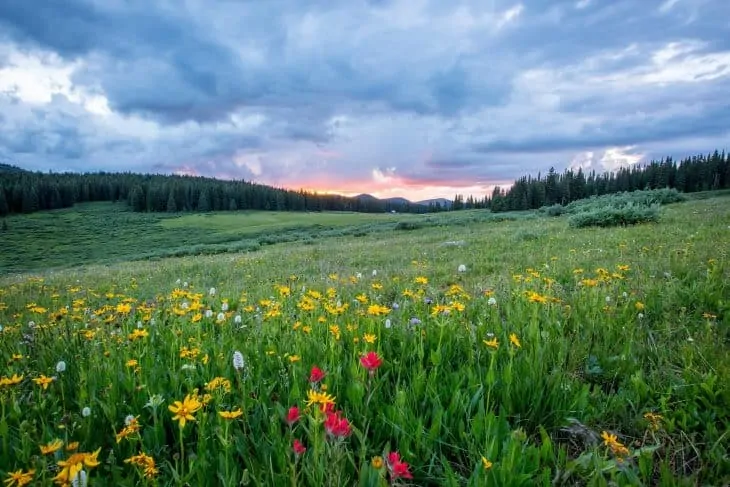
- Area: 25% of Earth’s land surface
- Definition: Areas that predominantly consist of different kinds of grasses
- Animals: Mammals, reptiles, birds and insects
- Plants: Grasses, shrubbery, occasional trees
- Climate: Varies greatly according to the region
- Biome: Temperate grasslands, savannas and shrublands
- Types: Steppe, savanna, tundra, prairie
- Evolution: Pliocene, Miocene
- Usage: Pastures, farming
- Types: Natural, anthropogenic
- Definition: Grassland Has More than 10 Names across the World
- Types: There are Two Basic Types of Grassland: Tropical and Temperate
- Location: Grasslands Are Everywhere, except Antarctica
- Issues: Prairies in the USA Are Slowly Disappearing, only 2% Remain
- Biome: Grasslands Need Rain, but Not Too Much!
- Climate: Grasslands are a Cross between Forests and Deserts
- Animals: Grasslands Are the True Kingdoms of Animals
- Seasons: Grass in Grasslands Doesn’t Always Grow
- Grasslands Are in Love with Fire
- Grass Length: Grass Giants and Grass Midgets
- The Length of the Grass Can Determine Animal Variety
- Bison Were Once Rulers of Prairies
- We Still Do Too Little to Preserve the Beauty of Grasslands
- Holy Moly Grasslands’ Soil Is Ideal for Farming!
- Grasslands Climate: From Freezing Cold to Hot as Hell
- Bald Eagle Is the Most Famous Inhabitant of the American Prairies
Grassland Facts Infographics
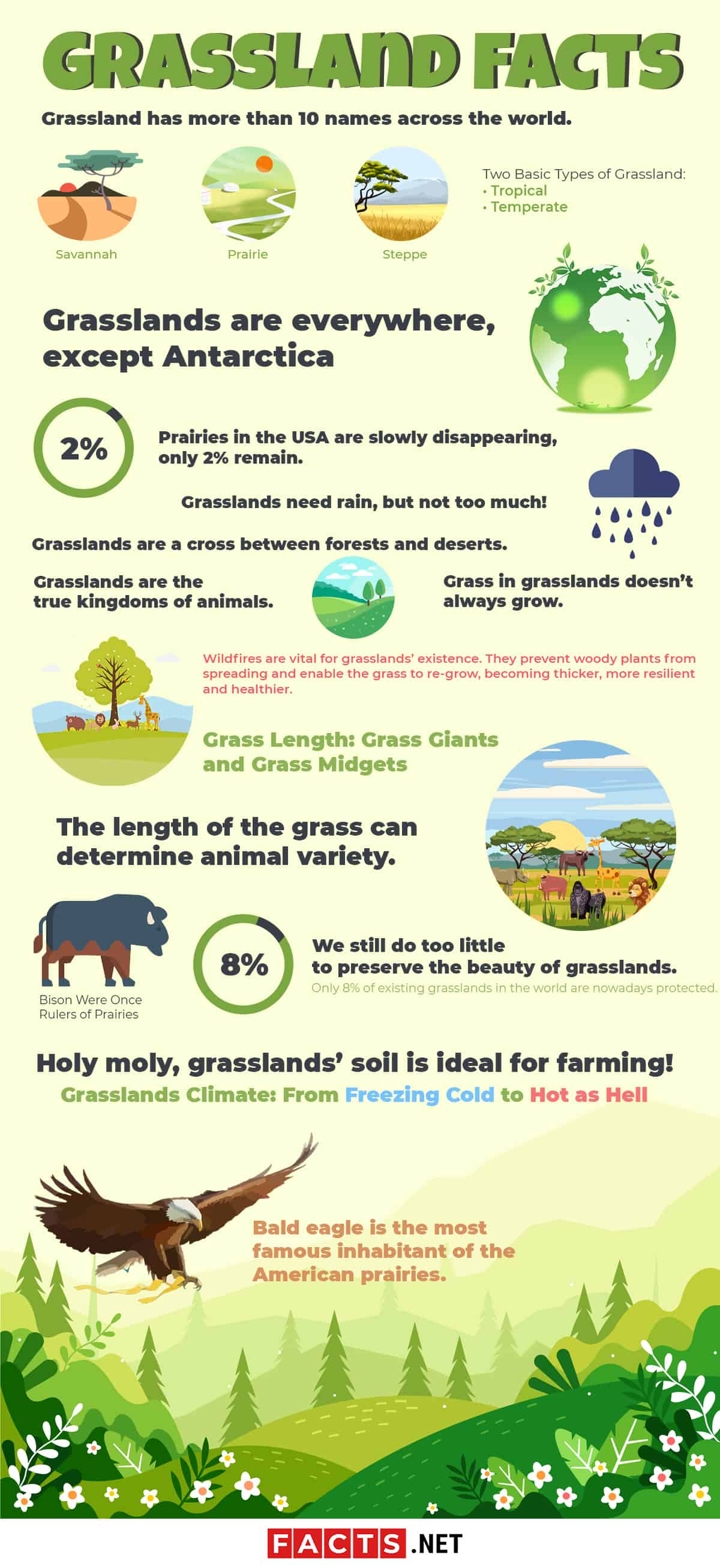
Grassland Has More than 10 Names across the World
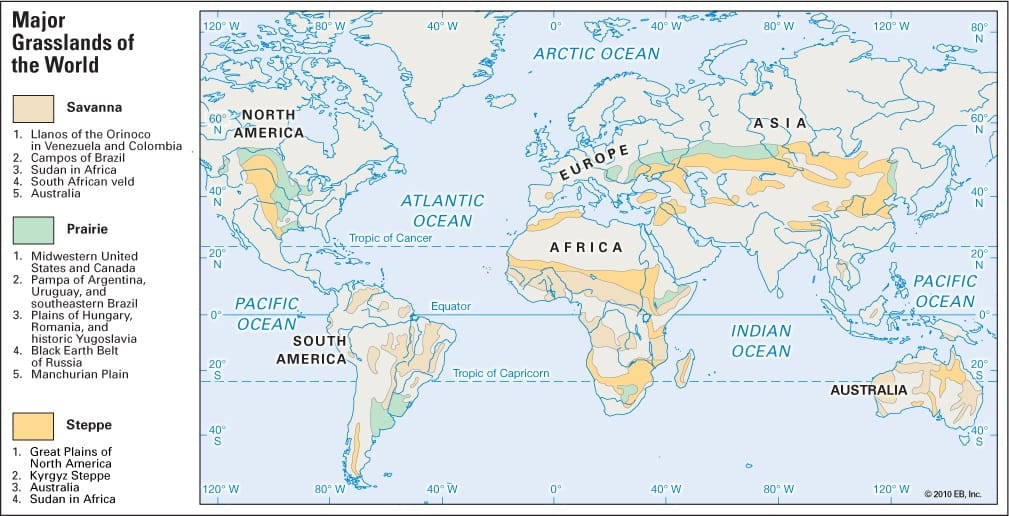
There are many interesting grassland facts, but one of the most important revolves around the names of grassland biomes. Grassland is grassland, right? Wrong. There are different names for grasslands around the world, depending on where they are located and what their ecosystems look like.
In North America, they are mostly called prairies. In South America, they are known as pampas. Europe and Asia, mostly have steppes. In Africa, they are known as savannas, and in Australia people often know them as rangelands. In the Northern hemisphere they are sometimes also known as tundras, and in the Southern hemisphere as desert grasslands. In mountain regions they are called montane grasslands, and in flooded regions as flooded grasslands. Who would have thought that grass could be so complicated…
There are Two Basic Types of Grassland: Tropical and Temperate
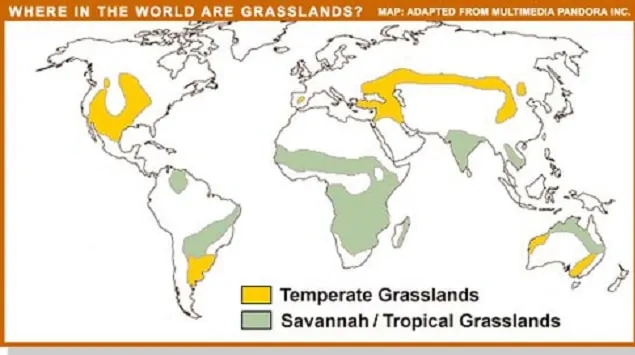
Although there are various classifications available, grasslands can be in general divided into two basic types: tropical grasslands and temperate grasslands. The difference? Climate and, consequently, also the animal and plant species that inhabit it.
Tropical grasslands have reasonably warm weather all year round and just enough precipitation to support their life. Temperate grasslands are generally warm, but also cold for part of the year, which forces the life there to adapt to diverse conditions.
Grasslands Are Everywhere, except Antarctica
Nowadays, grassland biomes cover approximately a quarter of our planet’s land surface, and in the past, thousands and thousands of years ago, they covered much more than that. It is no surprise that they can be found in almost every part of the world, with one exception: Antarctica. Antarctica’s very specific climate is the reason why they haven’t developed there.
Prairies in the USA Are Slowly Disappearing, Only 2% Remain
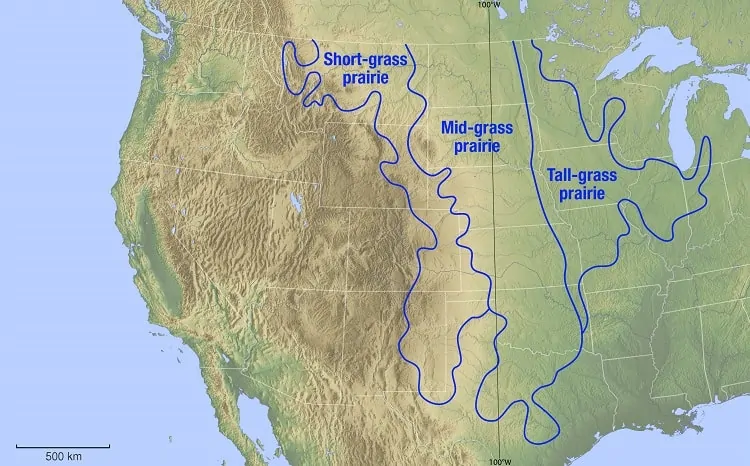
Prairies are the beautiful natural grasslands of America, but they are sadly slowly disappearing. Only 2% of original grasslands found in North America still exist today; the rest have been gradually destroyed by us through turning these grass-covered lands into farmland.
The authorities have become aware of the problem in recent decades, launching various preservation programs that will, hopefully, help protect these beautiful landscapes from extinction. In addition to preservation policies, there have also been efforts to restore the already destroyed grasslands by planting grasses in areas that were previously used for farming.
Grasslands Need Rain, but Not Too Much!
Where there are plants, there also has to be some kind of moisture in the soil, and grasslands with their various kinds of grasses, shrubbery and even occasional trees are no different. But the relationship of grasslands and rain is a complicated one. All types of grasslands need a certain amount of rain, but then again not too much rain, since that will cause them to transform into something else.
And how much rain is too much rain? How much is too little? That depends on the type of grassland and its location, but grasslands in general get around 20 to 35 inches of annual rainfall. Some grasslands also exist in areas where the annual rainfall exceeds 60 inches annually, and some exist in areas where there is as little as 10 inches of annual rainfall.
Grasslands are a Cross between Forests and Deserts
You already know that all grasslands get a specific amount of yearly rainfall, dependent on their exact location in the world. But what you didn’t know is that if any grassland received much less rain than ordinarily, it would become a desert, and if it got much more rain than usually, it would eventually turn into a forest. That is also the reason why grasslands are often located between deserts and forests – these nearby areas get less or more rain, and have thus developed into something else.
Grasslands Are the True Kingdoms of Animals
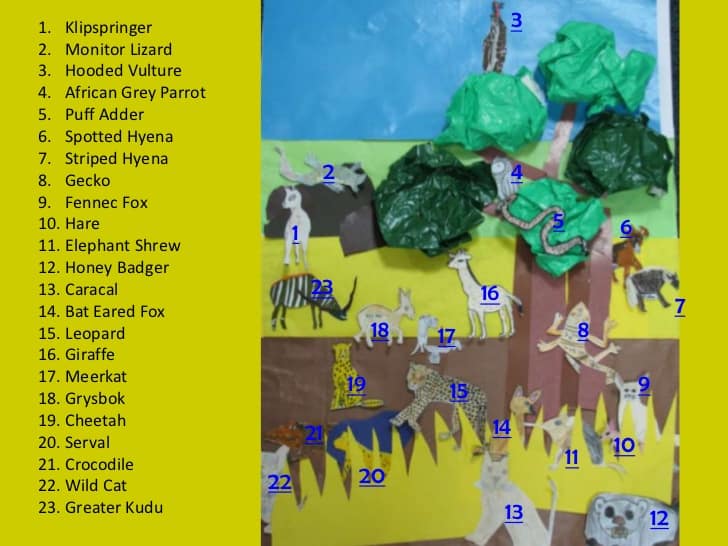
There are two reasons for this. First, true grasslands (those that haven’t been transformed or partially transformed into farmlands) are scarcely populated by humans and are thus perfect natural habitats for animals. And second, the climate of grasslands ensures that animals get everything they need, including enough food. When it comes to animals, grasses and similar plants are certainly a special culinary delight!
Grass in Grasslands Doesn’t Always Grow
Although grass is without a doubt the most important feature of grasslands, it doesn’t grow all the time, at least not in temperate grasslands that are most common in Earth’s mid-latitude, such as America’s prairies and Europe’s steppes.
Life in temperate grasslands is forced to survive in two very different seasons: the growing season and the dormant season. While the growing season allows the flora of the grasslands to thrive, the climate is too cold during the dormant season.
Grasslands Are in Love with Fire
Wildfires are vital for grasslands’ existence. They prevent woody plants from spreading and enable the grass to re-grow, becoming thicker, more resilient and healthier. How do grasses survive these fires? They have developed extensive underground systems during the course of evolution, which allow them to burst back to life, stronger than ever before, fairly quickly after a fire.
Grass Length: Grass Giants and Grass Midgets
Grasslands in northern climates are typically rich with short grasses (8 to 10 inches) due to cold winters and relatively dry summers. On the other hand, grasslands that are found in southern climates are often covered with grass that grows very tall – sometimes even up to 7 feet tall. Can you imagine that? Perfect for hide-and-seek games, don’t you agree? Animals certainly do!
The Length of the Grass Can Determine Animal Variety
Many animal species are present in every type of grassland all over the world, but some grasslands clearly boast more interesting animal species. What determines the variety of animal species in a grassland? Climate and environment have obviously had the most decisive influence, but there are some other, simpler and often more fun factors which determine the variety of animals in grasslands.
Believe it or not, but grasslands that are more open and have less or shorter vegetation are usually populated with more animal species than other grasslands. Why? Simply because there are not a lot of opportunities for predators to hide and stalk their prey there …
Bison Were Once Rulers of Prairies
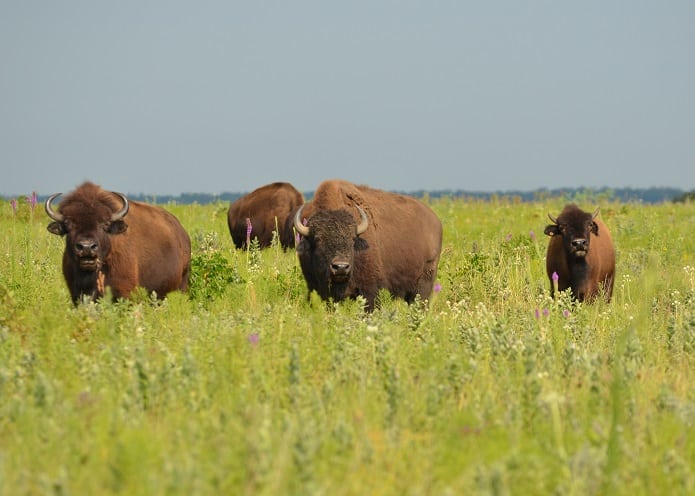
That’s right – the mighty American bison were once rulers of the vast grasslands of North America. In the beginning of 19th century, there were dozens of millions of bison that roamed the North-American prairies, but their meat and hides were a great temptation for the human race, so approximately 50 million bison were slaughtered during the course of 19th century.
The bison was very near extinction with only hundreds of animals remaining at a certain point in time. But various preservation efforts have been successful and bison is not considered an endangered species anymore. Even though there might be more than 100,000 bison today in North America, the prairies will never be the same again…
We Still Do Too Little to Preserve the Beauty of Grasslands
Only 8% of existing grasslands in the world are nowadays protected. That means that 11 out of 12 grasslands on our planet are still in grave danger of being destroyed. But these world-wide statistics are nothing compared to similar statistics in North America. Did you know that only one in one-hundred grasslands is protected in some way in North America? In addition to educating ourselves by reading interesting grassland facts, we could all perhaps also contribute to their preservation…
Holy Moly, Grasslands’ Soil Is Ideal for Farming!
We don’t turn grasslands into farmland because they are so vast and generally easily accessible; we destroy grasslands and create farmland instead because their soil is perfect for farming.
The roots of the grass in grasslands go very deep into the ground, reaching underground water supplies and bringing them to the surface, which makes the soil very fertile and very useful for growing more demanding crops which fill the bellies of humans, not animals.
Grasslands Climate: From Freezing Cold to Hot as Hell
It is funny how grasslands of the world, although similar in many aspects, greatly vary in others. Temperature difference between various grassland regions is almost unbelievable.
There are grasslands in the Southern hemisphere that have a temperature of up to 30 °C (86 °F), and there are grasslands in the Northern hemisphere that have to face the numbing cold of about -20 °C (-4 °F). Whatever the weather conditions, these natural sanctuaries always manage to support a colorful variety of animals and plants…
Bald Eagle Is the Most Famous Inhabitant of the American Prairies
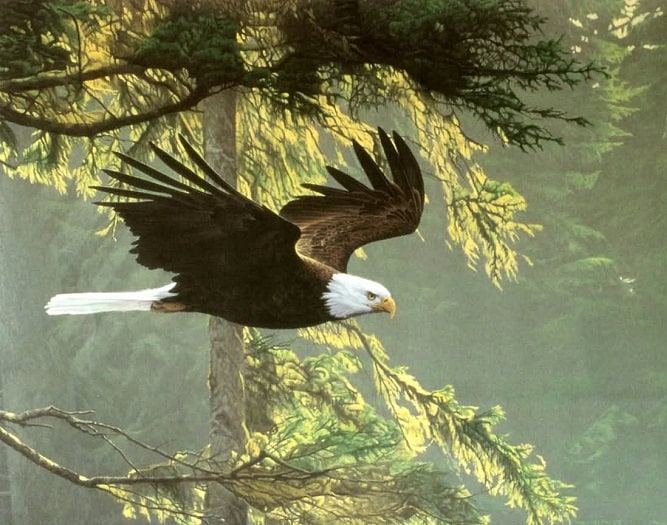
There are dozens of exciting animals that can be found in North-American prairies (and dozens of interesting grassland facts about animals, too) but the most famous (and certainly also most beloved) among them is the bald eagle (Haliaeetus leucocephalus).
The bald eagle has been a symbol of the USA since 1782 and can be found in all wetlands throughout the country. Being a ruthless, deadly predator, it stalks the grasslands, preying on fish, other birds, various species of mammals and even reptiles. If you would like to see the spectacular scene of a bald eagle munching on a turtle, just visit the grasslands of the USA’s East Coast…
Grassland Facts – Facts about Grasslands Summary
 Grasslands are areas of land that are covered mostly in grasses, although shrubbery, other non-wooden plants and occasional trees can also be found. They greatly vary in flora, fauna and climate, but are always exposed to a certain amount of rainfall and are full of various fascinating forms of life. Grasslands can be found almost everywhere in the world and are known by various names depending on the region and climate in which they are located. But the problem is that humankind is gradually but persistently destroying these wonderful natural habitats, transforming them into farmland due to their fertile soil.
Grasslands are areas of land that are covered mostly in grasses, although shrubbery, other non-wooden plants and occasional trees can also be found. They greatly vary in flora, fauna and climate, but are always exposed to a certain amount of rainfall and are full of various fascinating forms of life. Grasslands can be found almost everywhere in the world and are known by various names depending on the region and climate in which they are located. But the problem is that humankind is gradually but persistently destroying these wonderful natural habitats, transforming them into farmland due to their fertile soil.
Was this page helpful?
Our commitment to delivering trustworthy and engaging content is at the heart of what we do. Each fact on our site is contributed by real users like you, bringing a wealth of diverse insights and information. To ensure the highest standards of accuracy and reliability, our dedicated editors meticulously review each submission. This process guarantees that the facts we share are not only fascinating but also credible. Trust in our commitment to quality and authenticity as you explore and learn with us.

